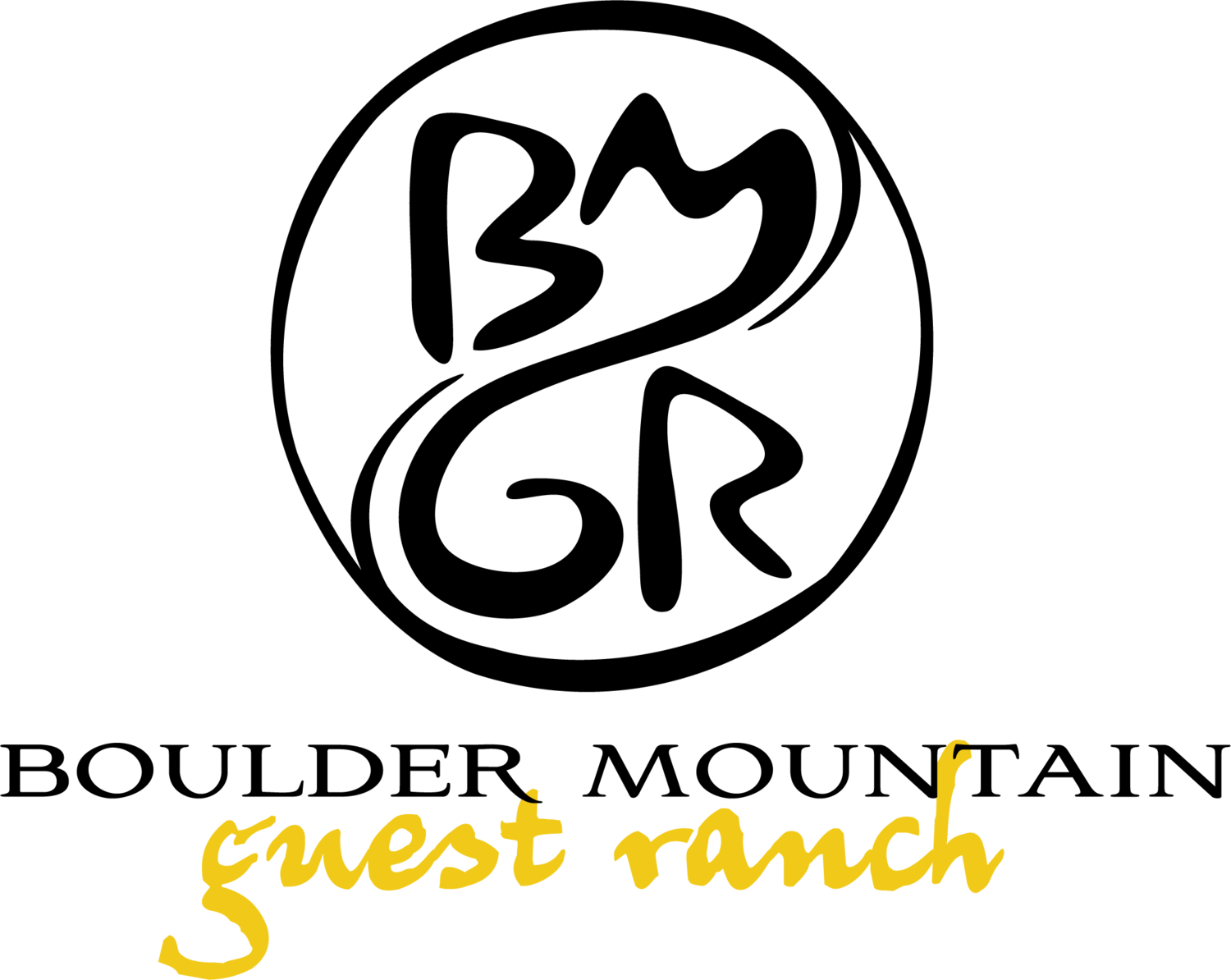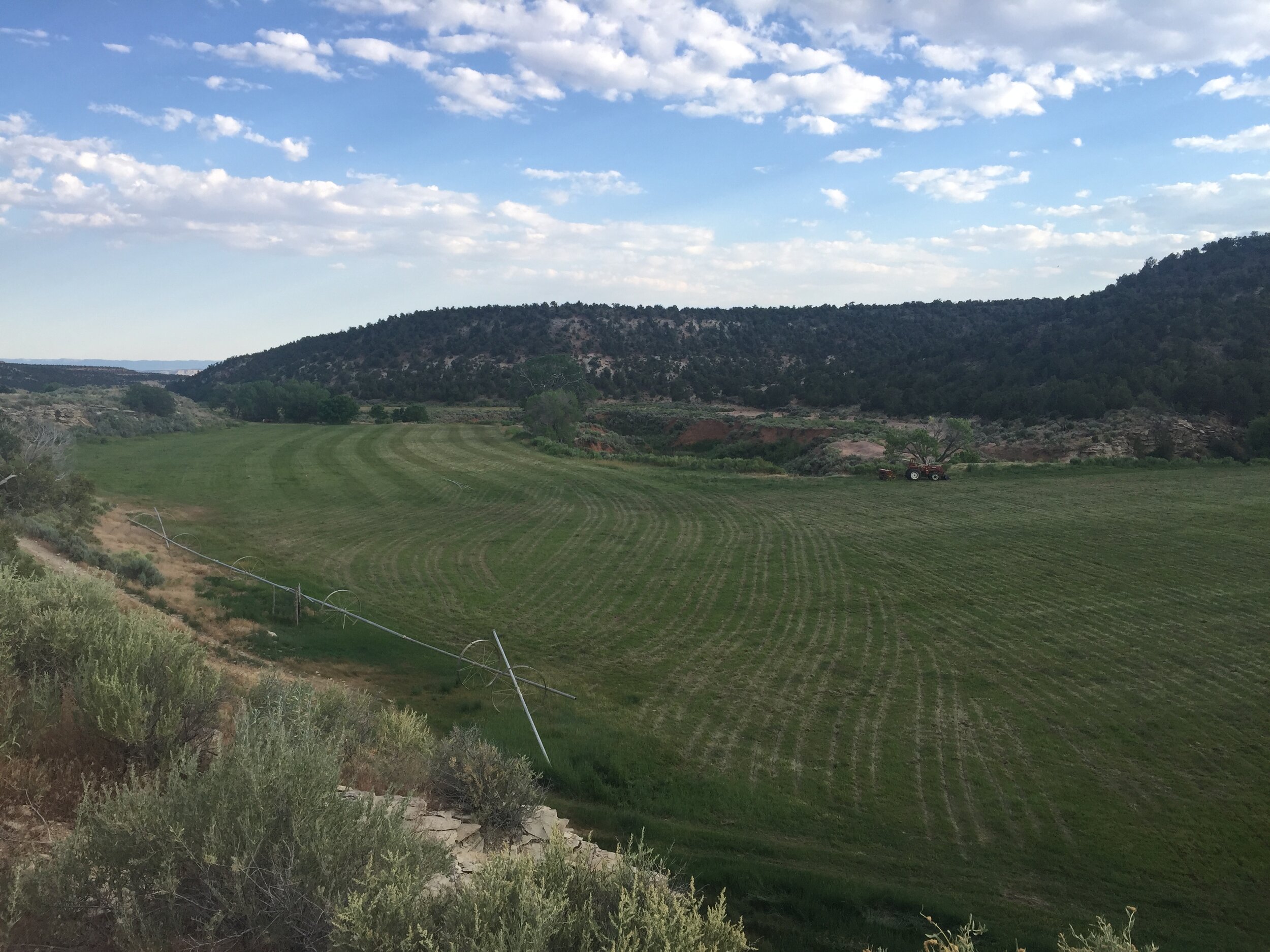Since day one, responsible land management and sustainable practices have been at the core of our mission. We are committed to protecting resources that our beautiful landscape offers, and we’re always searching for new ways to conserve our land. Some of the projects we’ve completed in the past are installing solar lights and a solar-powered shower, planting native seeds, and growing our own organic veggies raising grass-fed, grass-finished beef for Sweetwater Kitchen.
SOIL
Keyline
Working to restore the quality of the soil and water is a main priority for us. Since 2017, we have been using keyline techniques to improve the soil health in our pastures. The keyline technique aerates the soil on contour without tilling up the soil, dramatically reducing the disturbance of essential microorganisms that all healthy soil needs. Our plow was custom designed to inject compost tea under the top layer, giving the soil the boost it needs to create the nutrients or food for the plants. These techniques allow for efficient water absorption and mitigate erosion. Less water, more yields...just the way it should be!
Compost Tea
We apply compost tea to our garden, pasture, and lands to revitalize the soil and boost the nutritional value of the food we grow. Compost tea is a liquid mixture of carbon and nitrogen- rich organic matter that creates a home for beneficial bacteria and fungi that are essential to keeping soil healthy. Our landscape is very dry and so applying compost tea to the soil helps break up compaction and improves the soil's ability to retain water. We’ve used compost tea on 500 acres of pasture since 2017 and now, our pastures are in full remediation!
LAND
Native Seed and Tree planting
We’ve worked to identify the many native plant species that are indigenous to this unique stretch of land, and have successfully seeded over 4,000 pounds of native plants. This has allowed the natural state of this land to flourish, and we have been fortunate to watch the enrichment of our pasture lands as the plants have grown. We planted 2,500 herbaceous plants after the first phase of our water restoration project, along the newly formed banks of a small stream. Later, in 2017, volunteers from the Grand Staircase Escalante Partners joined with Boulder locals to plant 1,781 native seedings, which is vital to preserving the biodiversity of the region.
Erosion Control
Erosion has been a problem in the southwest, especially on farm and grazing land mainly due to the lack of understanding and land mismanagement. One of the challenges we faced when we acquired the land was erosion along the arroyo. With the help of the beavers and a lot of manpower we have been able to create systems to help slow down or even prevent erosion. Fortunately we have a quarry on our property that allows us to acquire flagstone for the buildout of some of these crucial areas. By utilizing rock to help with stabilizing the soil it helped to increase plant growth, because plants LOVE edges! Selecting long rooted plants to round off the project created even more key stabilization of the soils. With the help of the innovative minds of WaterShed Artisans, we have constructed erosion themed art throughout the property in the form of trails, stairs, walls and holding ponds. It’s been a perfect blend of functionality, sustainability and art.
WATER
Stream Restoration
Sweetwater Creek is a charming modest body of water that gently ebbs and flows through BMGR’s property; this tiny creek meets up with the Escalante River and then eventually with the mighty Colorado. The original stream was altered into a straight flowing, rapidly eroding stream that would typically dry up mis summer. In June of 2016, water restoration masterminds Craig Sponholtz, and Daniel Francis with WaterShed Artisans started reviving the creek. Within 20 days, and an incredible earthwork project, the section of dilapidated property was positively changed. They focused on springs, slope wetlands, and creek corridors to protect and expand the landscape’s moisture storing areas. The project stabilized active erosion and prevented further degradation of this important source of water Local lava rock and boulders were placed in strategic locations in order to create cascading, meandering, flood resistant flows that included numerous pools and new native vegetation.In the end, they restored dispersed flow and increased infiltration at every opportunity.
Wetlands
In May of 2018 the wetland and stream restoration project was completed. It took 3 years of planning with the help of wildlife biologist and wetland ecologist Tom Biebighauser and Craig Sponholtz, the founder and owner of Watershed Artisans. Restoring the wetlands controls erosion, cleans runoff, and brings a diversity of plants and animals back to the ecosystem. During this project, we built 9 wetland ponds to support a diversity of all kinds of animals. Specifically, we focused on adding features to the ponds to help endangered species like bald eagles, Bluehead suckers, and several species of rare frogs and toads to thrive. The transformation was incredible. The wetlands are a symbiotic ecosystem, and as the plants drank water from the ponds they flourished and attracted birds and pollinators such as bees, bringing in even more wildlife to the area. The land now boasts over 20 wetland ponds. It’s exciting to see nature thrive...and we have been lucky to be a part of it.
Beavers
Throughout the years at BMGR, we are so blessed to witness an incredible land transformation. An arroyo that was once desolate and void of almost all plant and animal life apart from sage brush, has transformed into a beautiful creek with many ponds, now home to a variety of plants, migratory birds, and other wildlife. Beavers are a keystone species, meaning that they can create an entire ecosystem. They play a unique and crucial role in the way the ecosystem functions. These animals have positively enhanced this environment, and in turn have enhanced the lives of those that live in it, including us humans. They are our inspiration for many of the land and water projects we have embarked on. We have witnessed their population grow over the years and their work increase, bringing more abundance to the ecosystem surrounding us. By observing and working with beavers we have been able to successfully protect key trees, just by wrapping them. In turn, and in support of the beavers and the planet, we have planted over 200 trees on the property. Alternatively, these magical beings have found other woody sources such as willows, sage, and cattails. These amazing beings successfully prune and grow their own food and building materials. By observation we have even been able to determine future weather patterns just by how they manage their dams. Thanks to the beavers and their inspiration we continue to learn and grow with them
Swales
Swales are well-designed, on contour ditches to help with erosion, rainwater harvesting and runoff. Throughout the property we have designed and built a series of these systems. Using lasers to determine contours and the direction of swales, it helped to slow water in our snow melt off and monsoon season. The results of this project happened immediately and we are able to control the silty run off from the hillsides that often covered and killed the plant life below. The swales are mini water tables and by planting along the berms of the swales it slowed erosion and produced more abundance. By working with nature and mimicking its patterns, the plants returned and the land flourished. Simple solutions with big results.
Solar Shower
Our living solar shower was built on the property in 2013. The design came from Jean Pain and was our first real permaculture project! The solar shower is located next to our garden by the glamping units. Upon entering, you are surrounded by tall willows that create a unique and secluded shower. Through the use of a solar panel, the water is heated by the sun. When possible, the solar shower is heated by a compost pile. The compost pile heats up and in turn heats the water for the shower. This can last up to 3 months!! The compost from the pile is then utilized for other land projects.. The water used for the shower ends up in a grey water system that helps water the trees and plants surrounding it. Meaning….everytime you shower you are watering the land!









